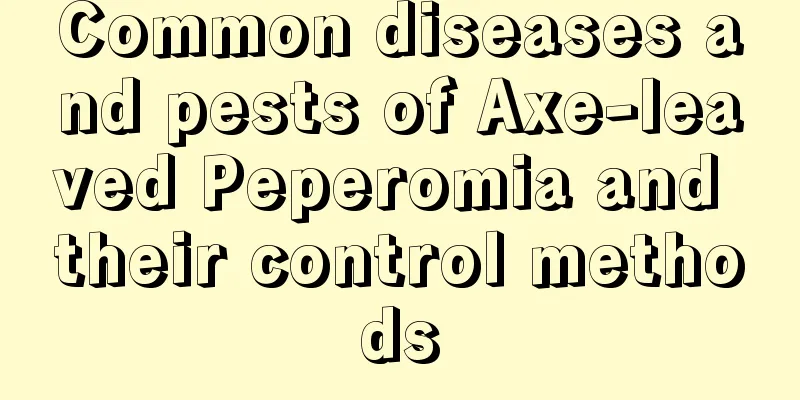Common diseases and pests of Axe-leaved Peperomia and their control methods

Common diseases and pests of Axeleaf PeperomiaDiseasesA common disease of Axe-leaf Peperomia is leaf spot. The symptoms of leaf spot disease are: oval, long, light reddish-brown spots on the leaves, surrounded by chlorotic circles, which later expand into large irregular patches with black spots on them. The leaf spot pathogen overwinters in diseased debris or on the surface of potting soil, and spreads with wind and rain to infect plants during the disease period the following year. It is easy to occur in greenhouses in all seasons. Excessive planting density, poor ventilation and excessive humidity can easily lead to disease. PestsA common pest of axe-leaf peperomia is scale insects. Once attacked by scale insects, the leaves will turn yellow, the branches will wither, the plants will decline, and it is easy to induce sooty mold disease. Scale insects have strong reproductive capacity, and the peak season for pests is the high temperature season in summer. They like hot and humid environments and often attach themselves to leaves. In the process of crawling, they destroy the tender green leaves of the axe-leaf peperomia and produce patches of gray lesions. Common pest and disease control methods of Axe-leaf PeppergrassStrengthen managementThe cause of diseases and insect pests is inadequate management and maintenance. During the maintenance process during the spring and autumn growing seasons and the winter and summer dormancy periods, paying attention to strengthening watering, lighting, and ventilation to ensure a suitable growth environment for the axe-leaf peperomia is the best prevention and control method. Cut off diseased leavesDuring the cultivation of Axe-leaf Peperomia, if scale insects are found on individual branches or leaves, you can gently brush them off with a soft brush, or combine it with pruning to cut off the insect-infested branches and leaves. They must be brushed clean, cut clean, and burned in a centralized manner; do not throw them away randomly. If leaf spot disease is found, the diseased leaves should be cut off in time and disinfected. Chemical treatmentLeaf spot can be prevented by spraying with Bordeaux mixture. Once scale insects are found, they should be sprayed with 1000 times diluted omethoate. |
<<: Planetary pests and diseases and their control methods
>>: Green bell pests and control methods
Recommend
Does lettuce prefer shade or sun?
Does lettuce prefer shade or sun? Lettuce is easy...
How to keep seeds of chives and how to plant them
How to save chive seeds Chives are a common veget...
How to grow tiger orchid to make it bloom
Tiger orchid flowering time Tiger orchid is a pla...
The growing environment and conditions of laver
Porphyra growth environment and conditions Porphy...
Common diseases of Clivia
Common diseases Some common diseases of Clivia in...
What are the precautions for the maintenance of fuchsia in summer
Key points for summer care of fuchsia First, cool...
How many years does it take for azalea seedlings to bloom?
1. How many years does it take to bloom? Azalea i...
When is the best time to bag Dangshan pears?
The role of bagging for Dangshan pear 1. Preventi...
Onion planting time and method planting whole process
Onion planting time Due to the influence of diffe...
Can potted plants be watered with Coca-Cola? Precautions for watering potted plants with Coca-Cola
Can potted plants be watered with Coke? Potted pl...
Cultivation methods and precautions of Impatiens
1. Matrix When you first start cultivating and br...
What is fern?
What is fern? Bracken is a plant of the Pteridace...
Chlorophytum Pruning
1. Pruning method 1. Simple pruning: Chlorophytum...
What to do if the leaves of cat's eye arrowroot turn yellow and dry
1. Improper lighting It prefers a semi-shaded env...
How to trim pitcher plants
How to prune the branches and leaves of Nepenthes...









